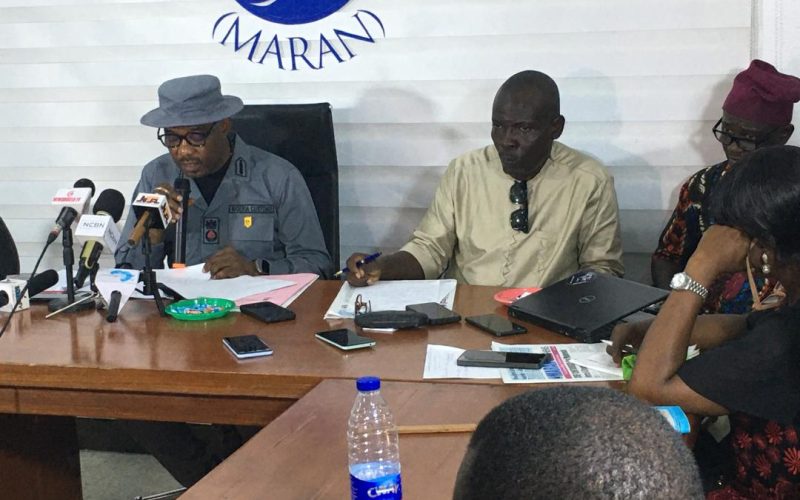The Customs Area Controller (CAC) of Tin Can Island Command Port (TICP) Comptroller Dera Nnadi, has revealed that security and logistical challenges are slowing down night operations at the port.
Comptroller Nnadi, who spoke during a visit to the Maritime Reporters’ Association of Nigeria (MARAN) International Press Center, explained that the initiative to begin night operations was driven by necessity but has been hindered by several factors.
The CAC noted that the port access road has been impassable for nearly two decades, making movements across the port corridors extremely difficult.
He also mentioned that stakeholders have been vulnerable to attacks during their commute. To address these issues, Nnadi proposed reviving the movement of goods through the waterways, which saw some success but did not fully alleviate the congestion.
Upon returning as the Area Controller , Nnadi observed that congestion issues persisted, undermining service delivery and operational efficiency.
He engaged in multiple meetings with management and received support from the Nigerian Police to create public awareness about the dire state of the port access road. The media played a crucial role in raising awareness, and eventually, the road was cleared.
To capitalize on this development, the port extended its operational hours, starting with scanning containers overnight and later expanding to physical examinations and other services.
However, Nnadi emphasized that infrastructure and security are essential to sustaining night operations. He stressed the need to light up the port and its corridors and ensure robust security measures to maintain efficiency and safety.
He clarified that the slow pace of night operations is a strategic response to long-standing challenges rather than a temporary measure. He assured stakeholders that the port is working to address these issues and improve the efficiency and competitiveness of Nigerian ports in the West African sub-region.

